Complete Story
08/23/2016
New York Changes to Minimum Wage & Paid Leave
On April 1, 2016 New York State had some significant changes to employment law that will affect all employers in New York - increase in the minimum wage to $15 an hour and 12 weeks of paid family leave.
Minimum Wage Increase
The minimum wage phase-in is divided into three geographic regions: (1) New York City; (2) Nassau, Suffolk, and Westchester counties; and (3) the rest of the state. In addition, only in New York City, there is a distinction between large employers—11 or more employees—and small employers—10 or fewer employees.
Not all employers arrive at the minimum wage of $15 at the same time. Starting Jan. 1, 2019, the New York State Division of the Budget will perform an annual assessment to see if employers who have not already reached the $15 minimum wage will need more time to phase it in. And, starting Dec. 31, 2021, the minimum wage rate for employers outside of New York City, Nassau, Suffolk and Westchester counties will be published by the Department of Labor each year on the following Oct. 1 until all employers have reached the $15 minimum wage rate. All employers throughout the state are required to reach the $15 minimum wage rate by Dec. 31, 2021. There are no exemptions from the minimum wage rate law. And it will apply to all podiatry practices throughout New York State.
More Qualify for Overtime
More employment law changes came from the federal government, with the Department of Labor changing its overtime regulations covering who can be exempted from overtime—increasing the salary threshold from $23,660 to $47,476 per year. This change takes effect on Dec. 1, 2016.
Additionally, the new overtime rule amends the salary basis test to allow employers to use nondiscretionary bonuses and incentive payments, including commissions, to satisfy up to 10 percent of the new standard salary level. The new overtime rule makes no changes to the duties tests for exempting people from overtime pay—those tests are in addition to the salary threshold test. In order to be exempt from overtime pay, a person has to not only meet the salary threshold test, but also has to meet the job duties test—which requires that a person have either a significant management or policymaking role with an employer or have certain professional duties.
The enhanced salary threshold makes it much more difficult to classify lower paid employees as exempt policymaking/management people. There had been discussion about changing the duties test to make the duties much narrower for exemption from overtime pay, but the new rule left that topic alone.
It is important for podiatrists to confer with their payroll company or accountants to make sure they are in compliance with the new wage law.
Paid Family Leave
The 12-week paid family leave law is the first of its kind in the nation for a state. It will apply to all employers in New York State. There are no exemptions from the law. And it applies to employers of any size. It is patterned after many features of the federal Family and Medical Leave Act (FMLA), but the FMLA does not apply to employers with fewer than 50 employees. The New York version has no such limitation and applies to all employers, including all podiatry practices.
The New York paid family leave law is phased in starting Jan. 1, 2018. When fully phased in, employees will be eligible for 12 weeks of paid family leave when caring for an infant, a family member with a serious health condition, or to relieve family pressures when someone is called to active military service. Benefits will be phased in beginning in 2018 at 50 percent of an employee’s average weekly wage, capped at 50 percent of the statewide average weekly wage, and will be fully implemented in 2021 at 67 percent of employees’ average weekly wage, capped at 67 percent of the statewide average weekly wage. This program will be funded entirely through a nominal payroll deduction on employees, so it costs businesses—both big and small—nothing. Starting June 1, 2017, the New York State Department of Financial Services will use sound actuarial principles to establish the payroll deduction rate for funding the paid family leave benefit and will do so every year thereafter.
Employees are eligible to participate in paid family leave after having worked for their employer for six months. Starting in January 2018, eight weeks of paid family leave will be allowed at 50 percent of an employee’s average weekly wage; starting in January 2019 and carrying through 2020, 10 weeks of paid family leave will be allowed at 55 percent of the employee’s average weekly wage for 2019 and 60 percent of his or her average weekly wage for 2020; and starting in January 2021, the full 12 weeks of paid family leave will be allowed at 67 percent of the employee’s average weekly wage.
Another feature of the New York paid family leave law is that it protects the employee’s job and guarantees that the job remains available for the employee to return to once paid family leave ends. Similarly, it guarantees that any employee health insurance benefits be continued by the employer during the period of paid family leave. In both regards, this differs from existing New York State disability leave laws and is much stronger protection for employees.
The New York State paid family leave law is completely separate from the New York City paid sick leave law. In New York City, both laws will be effective simultaneously and will confer two separate and distinct paid leave benefits on employees. The two laws should not be confused with each other by New York City employers, who must implement both laws as required by each specific law.



